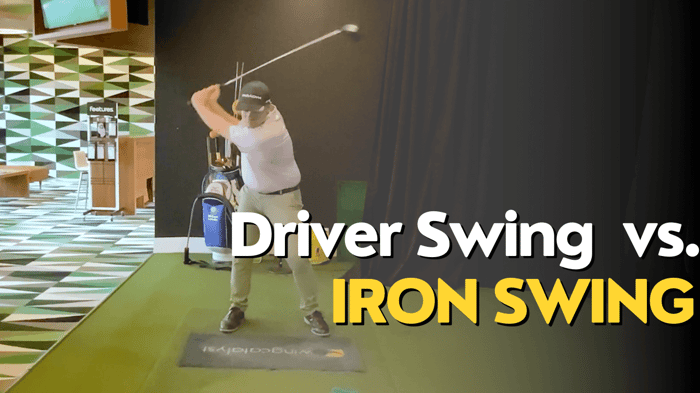If you want to shoot lower scores, it's crucial to understand the key differences between the iron swing and the driver swing. These two types of swings have unique elements that can greatly impact how the ball is struck. In this article, we will dissect the setup and execution for both swings and provide you with some golf swing tips to enhance your game.
Iron Swing: The Downward Strike
The iron swing is all about a descending angle of attack, which means you should be swinging down on the golf ball. This setup allows you to hit the ball first and then take your divot afterwards, ensuring a powerful and accurate shot.
To achieve this, make sure the ball is slightly forward of middle at address. Your shoulders should have only a minimal tilt—get your hands together, ensuring your shoulders are parallel to the ground before taking your grip. As your club gets longer, your tilt will naturally increase, but finding this initial position will give you a strong starting point.
Another essential element of the iron swing is weight distribution. Aim to have about 55% of your weight on your lead foot at address. This slight bias, coupled with a minimal shoulder tilt, will set you up for a successful descending blow on the ball.
To practice this, a helpful drill involves placing a towel about a grip length behind the ball. The goal is to swing without hitting the towel, forcing you to create a descending blow on the ball. As you improve, you can move the ball closer to the towel to increase the challenge.
Driver Swing: The Upward Launch
The driver swing, on the other hand, is a different beast. Because the ball is teed up, you'll want to swing up on the ball to achieve a high launch and distance. Swinging down on a teed ball may lead to pop-ups or drive the ball low into the ground, neither of which is desirable.
In terms of setup, position the ball forward in your stance. The exact position may vary between players, but typically it should be just off the inside of your lead foot's curvature, or slightly towards the arch. This forward ball position increases your chances of catching the ball on the upswing.
Next, add a little extra tilt away from the target. This additional tilt allows the club to meet the ball on an ascending blow and promotes a better side bend through impact. While an iron swing compresses the ball with you on top of it, a driver swing requires more side bend to effectively swing up on the ball.
A similar towel drill can be used to practice the driver swing. This time, place the towel in front of the ball and aim to swing over it without making contact. This exercise will encourage an upward strike and a more curved chest finish.
Remember Your Key Differences
Understanding these key differences between the iron swing and driver swing is crucial to striking the ball effectively. The iron swing requires a descending attack with the ball in the middle or slightly forward, weight favoring the lead foot, and level shoulders. The driver swing, conversely, calls for an upward attack with the ball forward, an added tilt, and more side bend.
Practicing these golf swing tips and utilizing the towel drill for both swings will surely elevate your game. Remember, mastering the correct setup and execution for both the iron swing and driver swing will make a significant impact on your performance on the course.
If you found this guide helpful, don't forget to like and subscribe for more golf tips and tricks. We hope to see you on the course soon!





